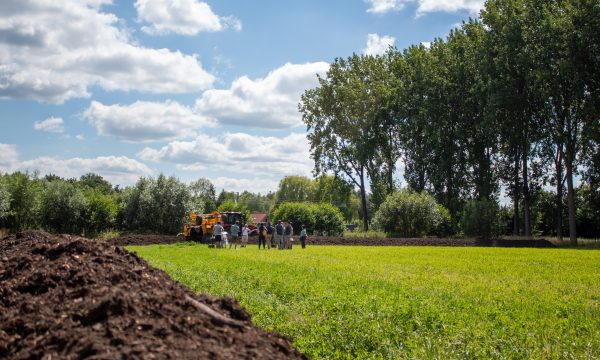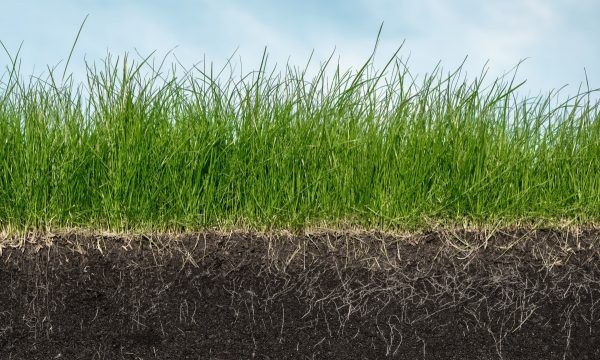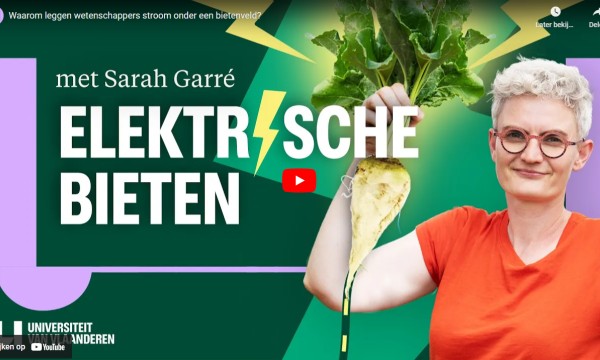News Potential of innovative (mixed) crops and cultivation techniques shown at second PPAE demo day in Hansbeke

After one year of experimenting with agro-ecological cultivation measures, the partners of the Experimental Platform for Agroecology in Hansbeke showed the first interesting results on the 50 ha site. Trials with mixed crops of a production crop with a legume were a success. Also the application of compost tea and manure in the autumn gave interesting results, as did experiments with mulch as weed control, sowing without ploughing and drought tolerant grasses.
No fewer than 200 people came to listen to the experiences of the farmers, contractors and researchers involved. Minister of Agriculture Hilde Crevits gave an overview of measures that can help farmers to meet a number of environmental challenges.
Organic farmer and co-owner of the domain Felix de Bousies (PHAE) expressed optimism about the evolution of his farm: "Even without ploughing or application of inorganic fertilizer, we have managed to achieve decent yields in cereals and even better yields in temporary grassland, with high feed value and quality. In addition, we can already see that the soil structure and soil life are improving."
Expert-consultant Alain Peeters (RHEA) once again emphasized the value of the experimental platform: "An agroecological practice that is closely followed and guided by researchers and experts is invaluable for the development of agroecology as a science. It is also a great tool for knowledge sharing, which is why we communicate intensively about the field work and experiments via the blog."
Researcher Koen Willekens (ILVO) expressed hope about the ongoing number of initiatives and applications, "There is clear interest within Flanders but also within Europe in the experimental platform and in the tested agroecological principles as a possible answer to Europe's Green Deal ambitions. The fact that we will also be closely monitoring the evolution of soil life and soil quality is a great added value for agricultural research."
Flemish Minister of Agriculture Hilde Crevits commented on the Flemish government's new pre-ecosystems: "It is important that innovative recipes for a sustainable future of agriculture are tested and demonstrated in this way. By supporting this pilot platform, but also with the new pre-eco schemes, we want to support farmers to start applying some proven agro-ecological practices on their farms. In doing so, we also want to make it clear that these measures can be useful within different farm types, whether they are large, small, organic or conventional."
ILVO blogs from the experimental platform
The team of PPAE Hansbeke blogs regularly about the field trials.

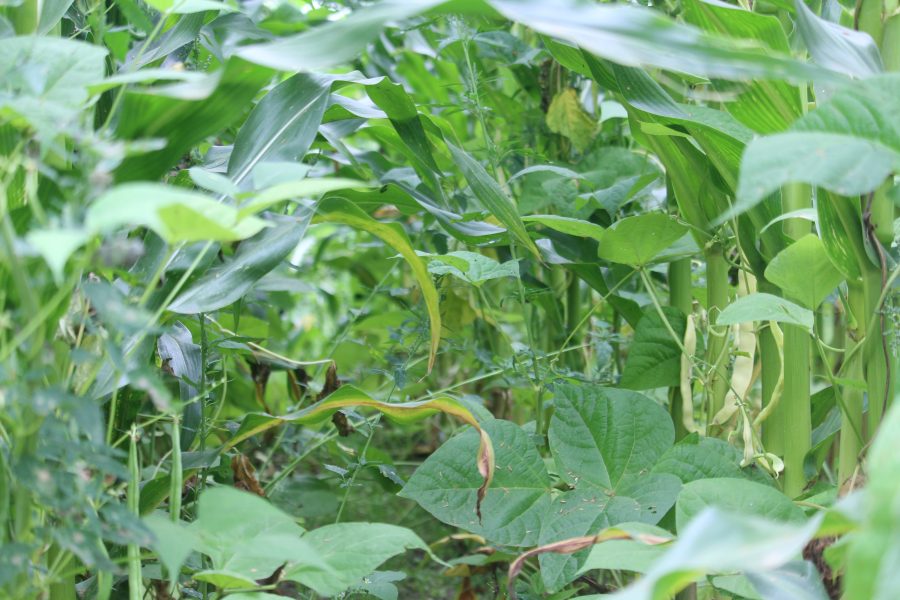





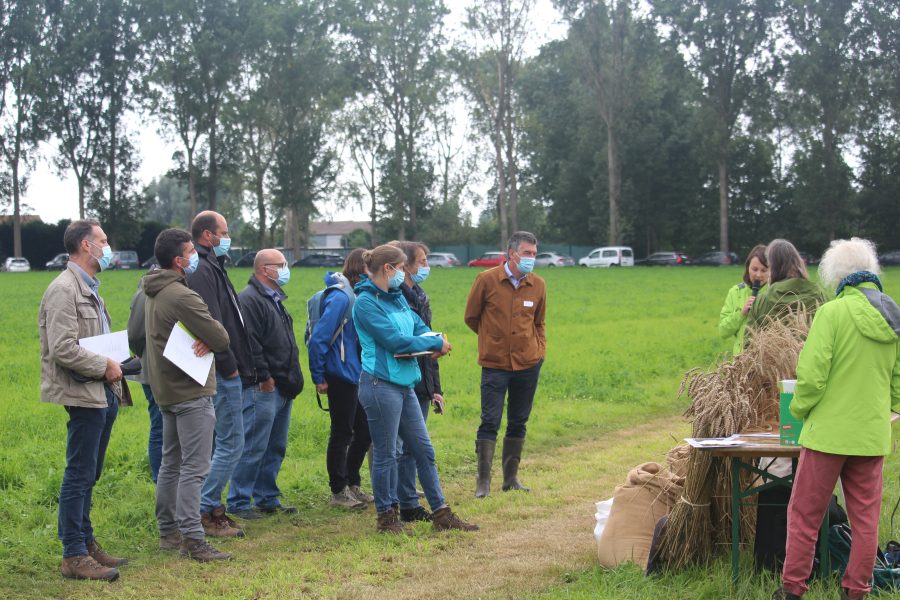

An overview of the trials and results shown, with the following agroecological principles in mind:
1. Consciously choose crops that promote soil life, soil structure, and soil carbon content in a variety of ways.
Silage maize-climbing bean rotation
The new VLAIO LA trajectory Farmers' benefits aims to offer dairy farmers some alternatives to the classic rotations silage maize-grass and maize-maize. In that context, an exploratory trial of silage maize and climbing beans is underway in Hansbeke. As a leguminous plant, climbing beans can absorb nitrogen from the air, so they do not require additional fertilization. Moreover, both crops fit well together and can be harvested, chopped, ensiled and fed together. The result is roughage with a higher content of (locally grown) protein, and hopefully a positive effect on the soil. An exploratory trial at PHAE is already promising. Both beans and corn have developed well. Koen Willekens (ILVO): "Now we are curious about the effect on the soil quality and the nitrogen availability in the soil, when the mixed crop is inserted in such a typical dairy rotation." This practice already occurs in Austria and Germany, as does a farmer in East Flanders who co-initiated the project.
Mixed crop malting barley with pea
Another mixed crop that was successfully tested in Hansbeke is malting barley and pea. The intention was to triage the barley and deliver it to local breweries, but the mixture was eventually harvested as whole-plant silage to be ensiled as cattle feed. The yield was good (+/-7 ton dm/ha) and mechanical weed control in the trial was also a success.
Cultivation of more diverse (baking) cereals
Several trials were done this year on einkorn (small spelt), baking wheat, baking rye and spelt, the latter in cooperation with the West Flanders experimental and knowledge center Inagro. Measured yields of wheat, spelt and rye were on average 2.9, 4.2 and 4.6 tons per ha, respectively. In a new project that has just been approved, ILVO and the Institute for Nature and Forest Research (INBO) will further investigate how to grow cereals in a sustainable way, and what these crops yield in terms of biodiversity (weed flora, insects, field birds). Hansbeke will again be one of the test sites.
Drought tolerant grasses for climate robust dairy farming
Breeders and knowledge centers have been working for several years on a new generation of drought-tolerant grasses. But do they yield enough to be of interest to dairy farmers in practice? Are they nutritious and tasty enough for dairy cattle, both fresh and ensiled? And what is the effect on milk yield and quality? In Hansbeke, for the VLAIO LA project Klimgras, the yield and feed value of the drought tolerant grasses reed fescue and cocksfoot will be tested and compared with ryegrass. This both in monoculture and in mixed cultivation with red clover. Maarten Cromheeke (ILVO): "In the first cut this year, they yielded as much as standard grasses (in dry matter). The results of the forage value, grazing test and uptake test are still awaited, but this seems to indicate that drought tolerant grasses are also a good choice in years without drought. Further research over the next three years will show how these grasses thrive and what the effect is when fed in a dairy ration."
Biomax as soil-improving green cover crop
Biomax is a sophisticated blend of green cover crops that increases soil fertility by improving soil structure, promoting soil life and increasing carbon content. There is no single recipe, as the mixture is adapted to the soil, climate and pre- and post-crop conditions. It can contain up to 10 different annual plants, which root in different ways and attract different beneficial insects, bacteria and fungi. The species sown in Hansbeke are sunflower, facelia, Alexandrian clover, vetch, field pea, field bean and flax. The effect on the soil will be intensively monitored in the coming years.
2. Minimal tillage to help soil structure and soil life and avoid carbon loss.
Sowing without plowing
Can you get a good yield with seeding without plowing? The experiences in Hansbeke are positive. The organic grain has a decent yield (3-4 ton/ha) and in the trials with silage maize climbing bean and Biomax the emergence and yield were also good.
Felix de Bousies (PHAE): "This broke a taboo for me. With minimal tillage I still have a good yield, in tonnage and in quality. My costs are also lower and the price I get for it is higher."
3. Avoiding external inputs like chemical pesticides and inorganic fertilizer.
Instead, work with organic fertilizers, legumes, natural enemies and keep the soil covered at all times.
Mulchen
Mulching as a barrier against weeds and against moisture loss from the soil was tested in Hansbeke, with varying levels of success. In one experiment, a mixture of grass and wood chips applied as mulch before and after the sowing of silage maize and climbing beans inhibited the growth of that crop. Koen Willekens (ILVO): "Mulch is applied to counter drought but due to the very wet weather this year, the layer has started to decompose strongly, which has caused a certain nitrogen starvation. With pure grass this might have been less of a problem. Post-seeding application proved more appropriate as overseeding did not leave the mulch layer intact." A well-developed Biomax with the roller-crimper was previously laid down on the farm. This weed-resistant mulch layer was then successfully sown directly into grain.
Compost tea
Compost tea is a culture of micro-organisms based on compost and organic feed. Compost tea can be applied to inoculate the soil with beneficial microbes. There is evidence that application to crops can improve their production and health. Koen Willekens (ILVO): "Compost tea is a lesser-known product that is nevertheless on the rise. That is why we are investigating whether it can effectively improve production and quality in a trial in Hansbeke with baking wheat and rye as test crops. Half a ton of additional yield for the wheat this year seems to confirm this."
Applying farmyard manure in the autumn for a winter cereal crop
Manure can be applied in the fall, but does it make sense to do so? Together with Inagro, a first trial was carried out in Hansbeke with goat manure for spelt after destruction of temporary grassland. The results were interesting: it produced a higher biomass yield and nitrogen uptake due to higher nitrogen availability. However, the grain yield came out the same for fertilized and non-fertilized variant (+- 4.2 tons/ha). Analysis still needs to show whether the protein content in the grain is higher for the fertilized variant. Koen Willekens (ILVO): "In the autumn we already saw a higher nitrogen availability, which somewhat increases the leaching risk. This can be countered by sowing earlier. Sowing in September (as a trial variant) did not work this time due to a persistently dry late summer. Early sowing also means that the grain can serve as a catch crop for the nitrogen released from the destroyed grassland."
4. Spreading risk through crop diversification and closing cycles by combining plants and animals on a farm.
Evolution towards a mixed farming system with closed cycles
In recent years, farmer Felix de Bousies has introduced more variety into his crop rotation, is planting walnuts this fall to also introduce fruit and wood (long term) as crops on the farm, and is preparing to raise livestock again, whether or not in cooperation with fellow farmers. This transition from a specialized arable farm to a mixed farm - with all its obstacles, opportunities and parties involved - is interesting study material for fellow farmers who want to go through a similar evolution. PHAE is therefore one of the 12 pilot sites monitored by researchers as part of the European Agromix project. Jolien Bracke (ILVO): "The aim is to gather very hands-on knowledge about switching to agroforestry and other mixed cultivation systems, and then to make that knowledge available to farmers all over Europe. In total, we will draw lessons from just under 100 practical cases in 13 countries."
